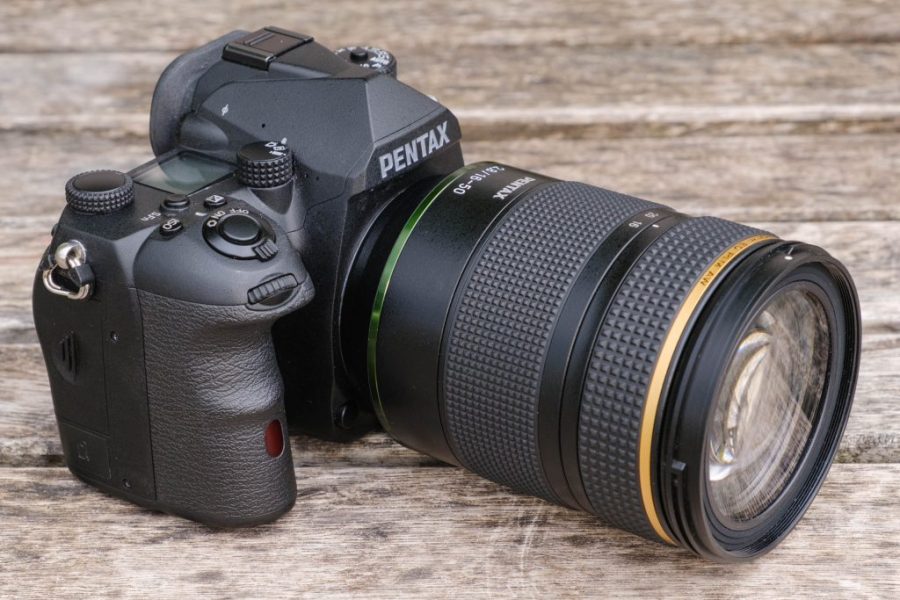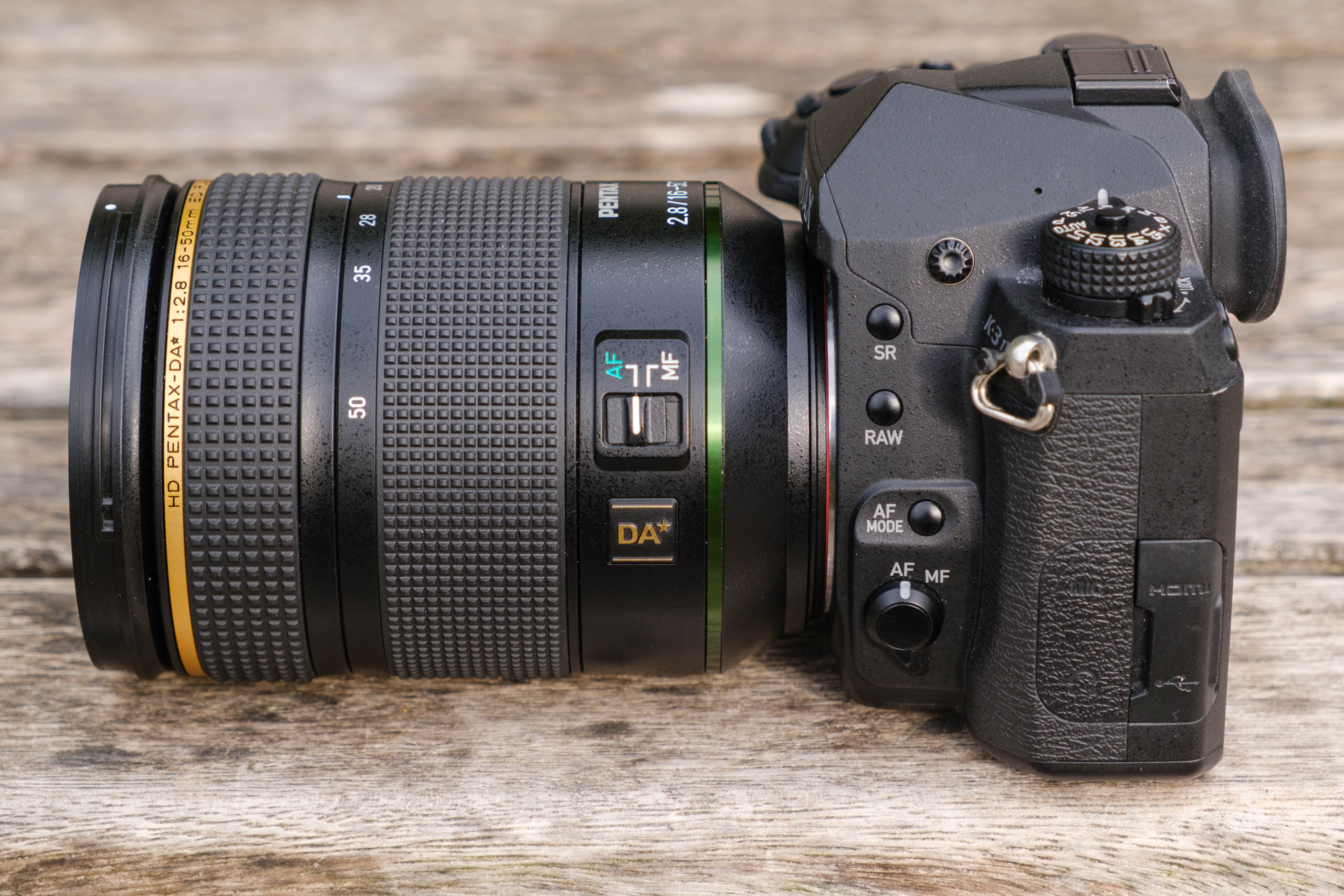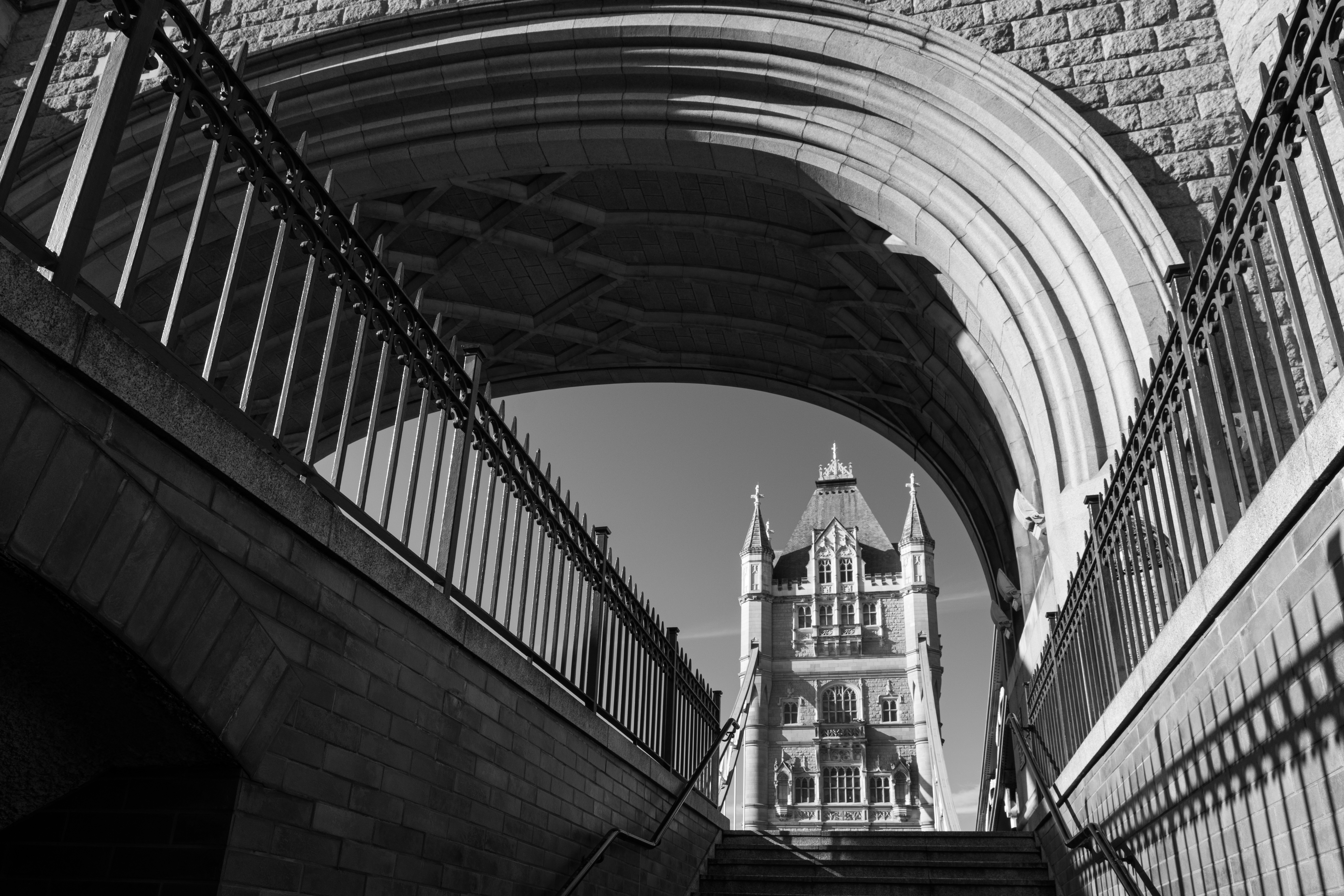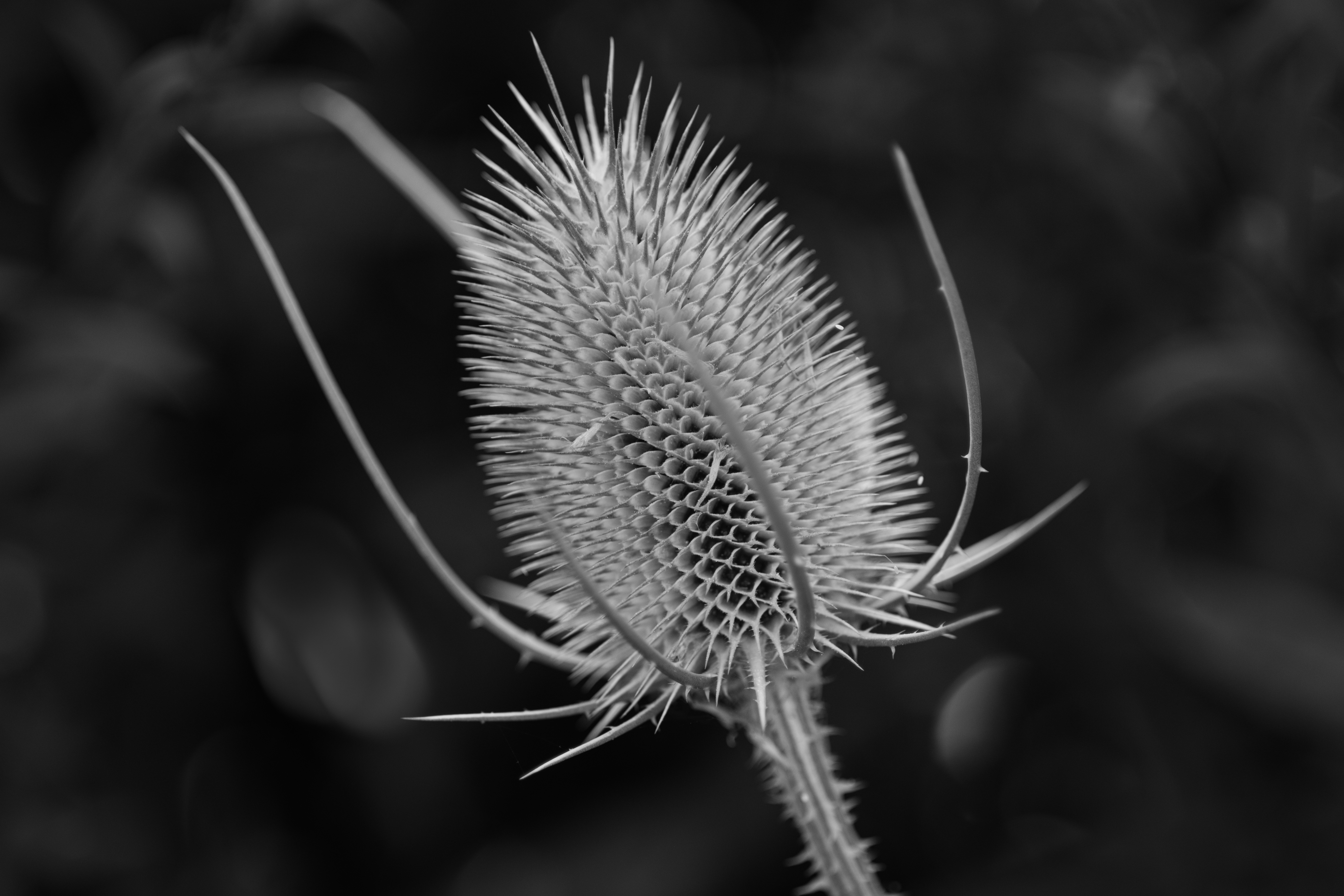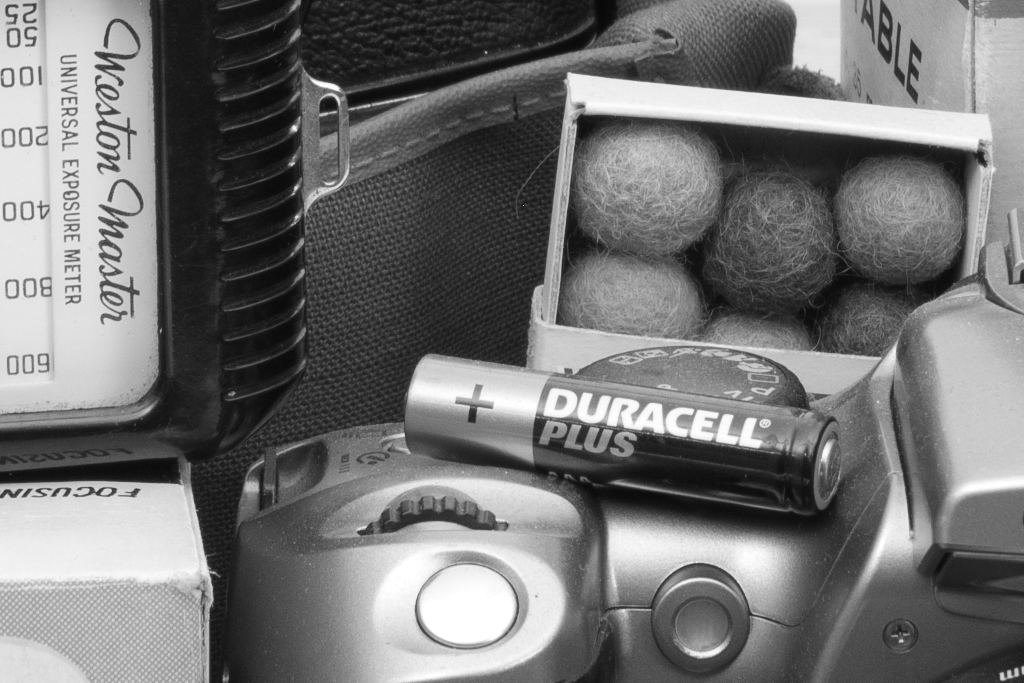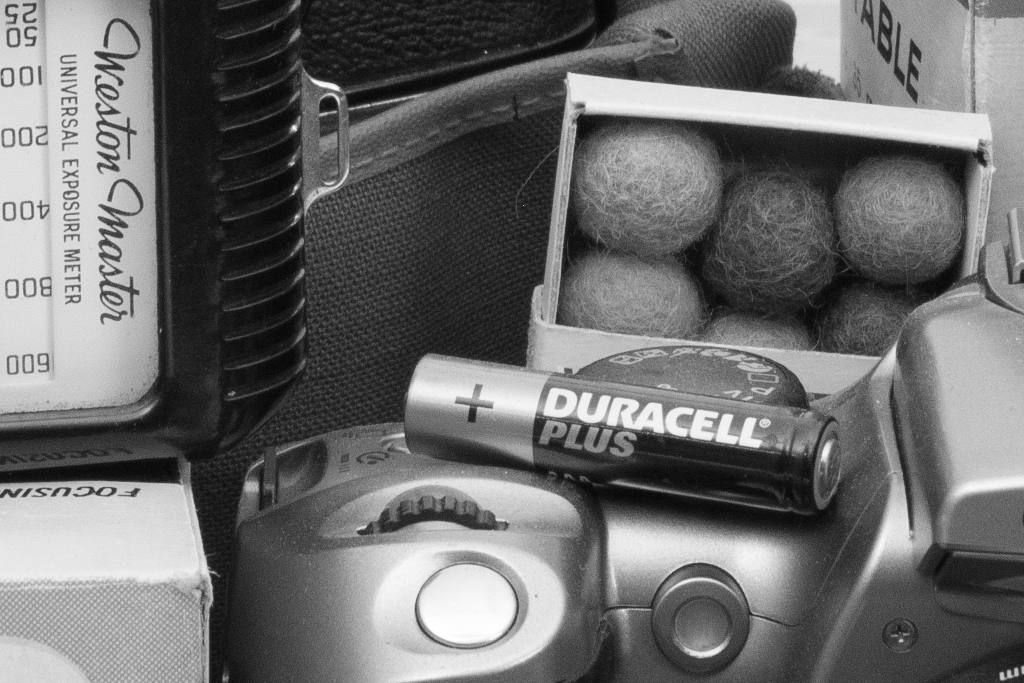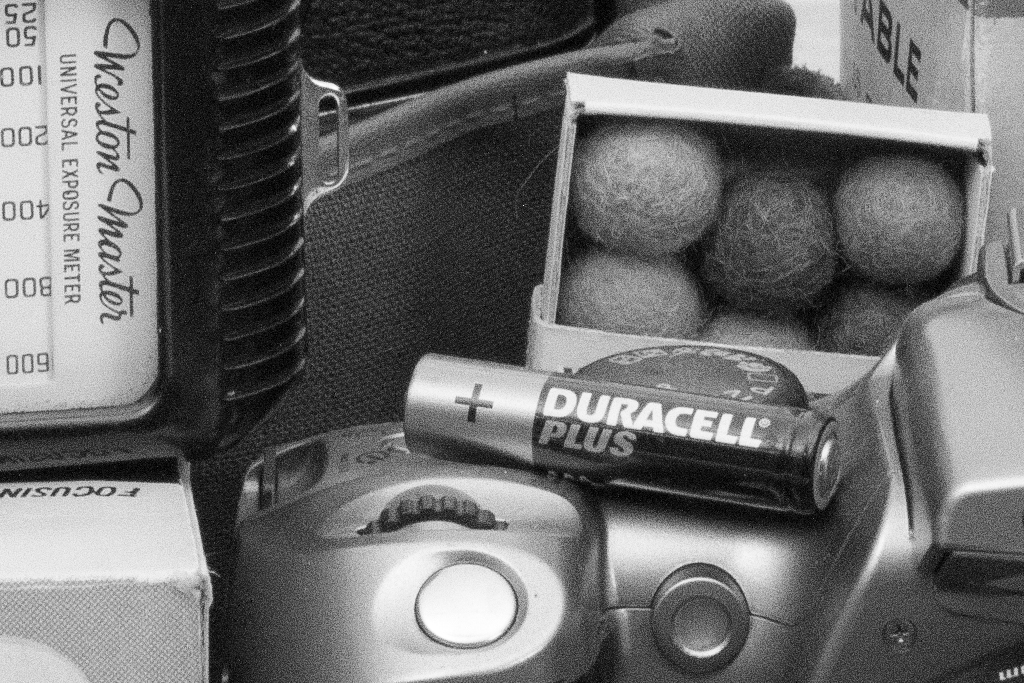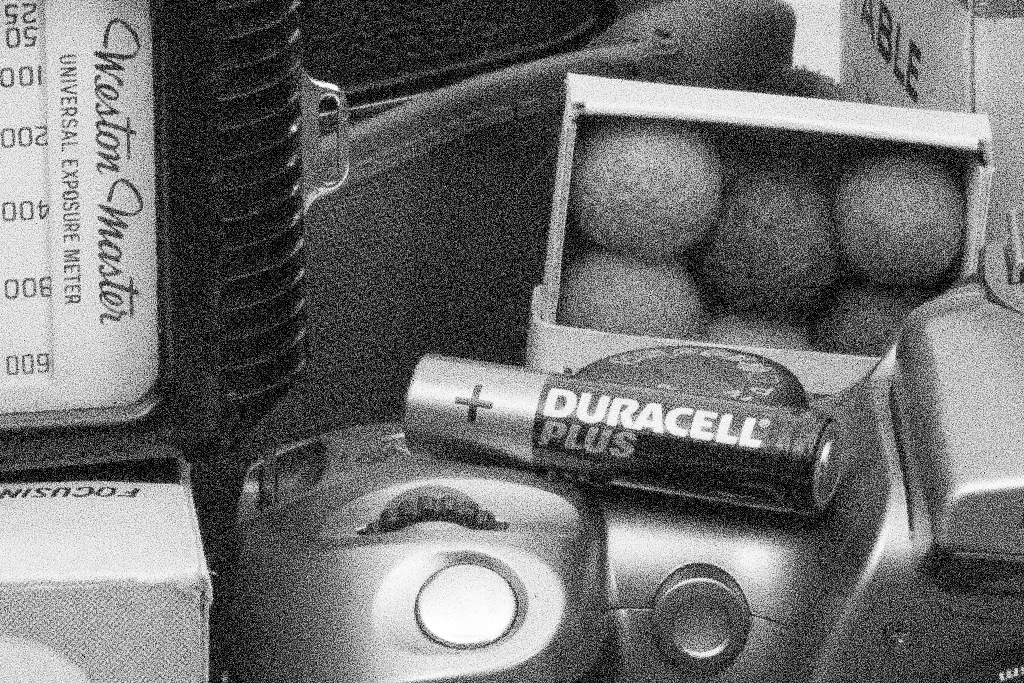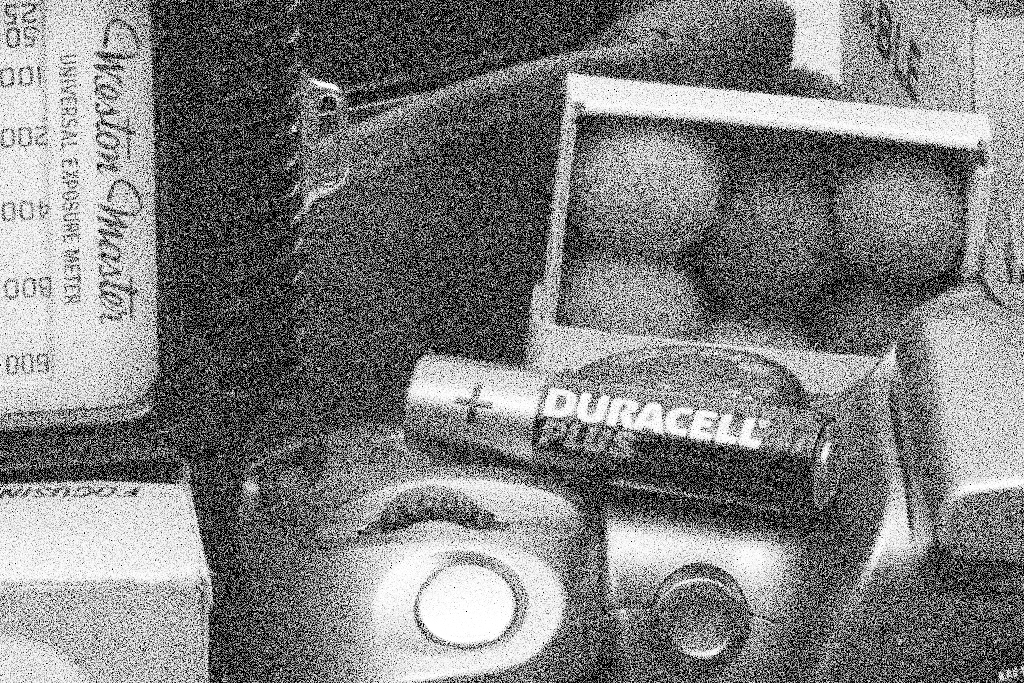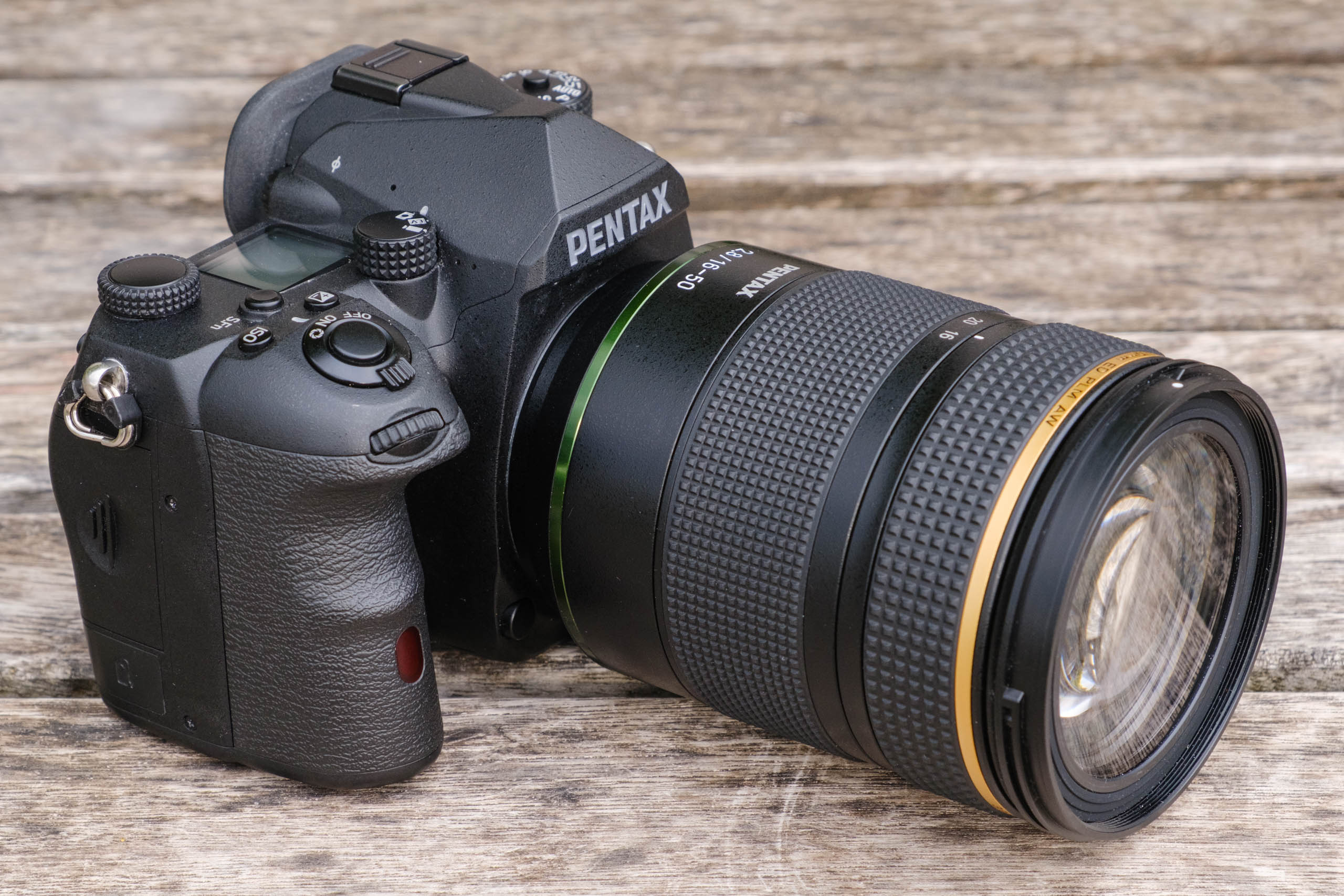Amateur Photographer verdict
A fine camera that produces fine results. Whether its specialist monochrome advantages are worth the investment is debatable, though – other Pentax combinations may achieve similar results.- Creates lovely monochrome image files with low noise & huge dynamic range
- Large, clear viewfinder
- Robust weather-sealed build
- Comprehensive array of external controls
- Works with a large range of K-mount lenses
- In-body image stabilisation works with every lens
- Fixed rear screen does not tilt
- Poor autofocus speed in live view
- ISO 200 setting prone to clipping highlights
Ricoh Imaging released in 2021 the Pentax K-3 Mark III, a high-end APS-C DSLR aimed squarely at enthusiast photographers. It proved to be a very capable camera indeed, combining fine handling, robust build, and impressive image quality to make it one of the best Pentax DSLRs ever. With the aptly named Pentax K-3 Mark III Monochrome, the firm decided to do something more radical: a version that only shoots in black & white.
Pentax K-3 Mark III Monochrome at a glance:
- $2,197 / £2,049 body-only
- 25.7MP APS-C sensor
- ISO 200-1,600,000
- 12fps continuous shooting
- 0.7x pentaprism viewfinder
- 3.2in, 1.62m-dot touchscreen
- 5-axis in-body image stabilisation
This isn’t the first black & white only camera we’ve seen, but it’s the first not to originate from the hallowed halls of Leica; and is the first DSLR, too. At $2,200 / £2,049 it commands a premium over the stock Pentax K-3 Mark III for $1,797 / £1,649 body-only, it’s dramatically cheaper than either of Leica’s current offerings, the Leica Q2 Monochrom ($6,630 / £5,300) and Leica M11 Monochrom ($10,160 / £8,300). While not exactly a camera for the masses, it is the most affordable dedicated mono-only tool ever.
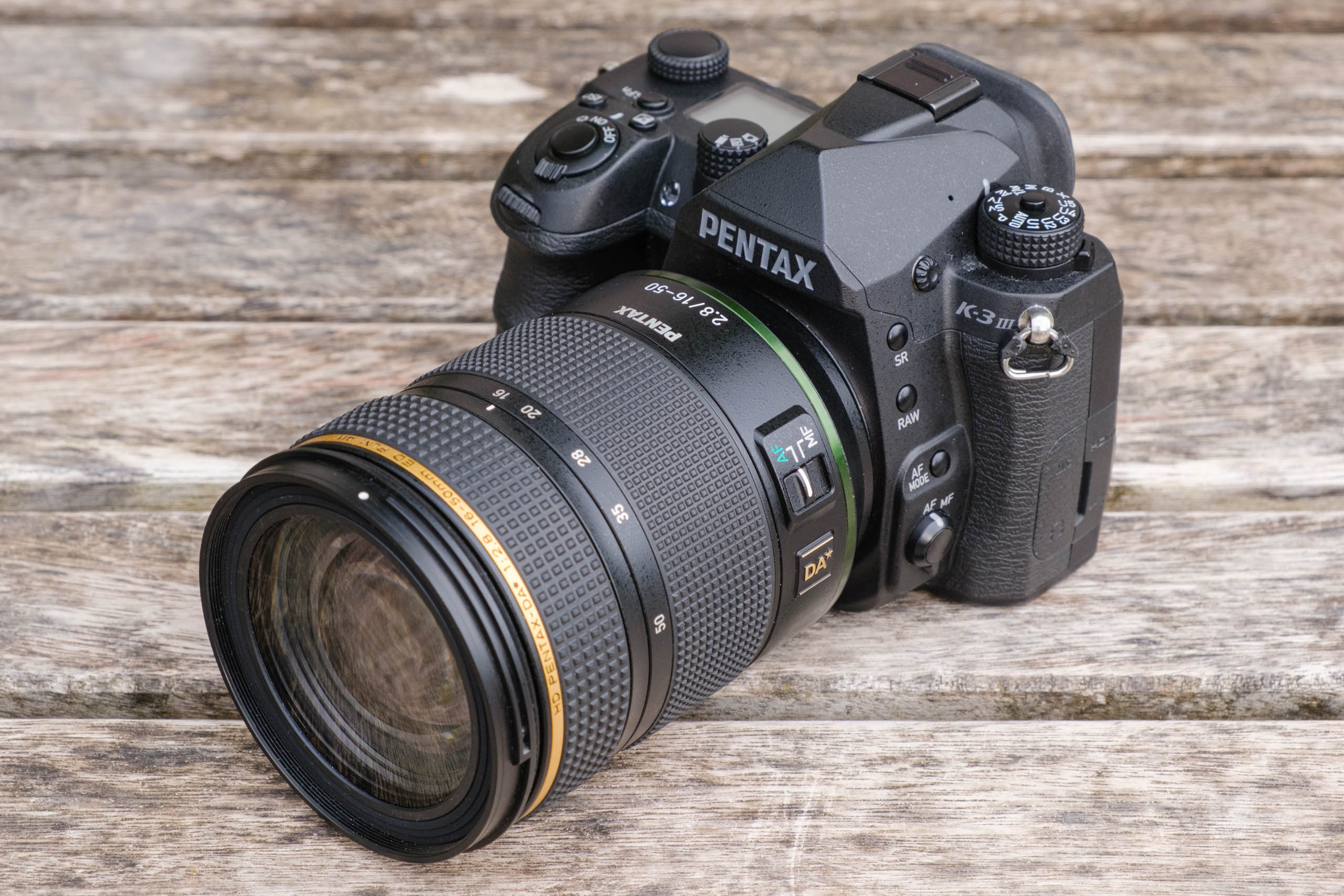
Of course, you can convert any colour photo to black & white, so it’s reasonable to ask why you’d use a specialist monochrome camera instead. The most obvious reason is technical. With the usual colour filter array eliminated, and no demosaicing process required to create the final image, each sensor pixel directly measures the light intensity at its location – no more, no less. In principle, this should result in sharper detail, smoother tonality, and lower noise. As we’ve seen from those Leicas, monochrome sensors deliver lovely image files.
However, there’s another, more subtle argument too. By eliminating any possibility of producing colour images, the camera forces you to think purely in terms of light and tone. By so focusing your mind while shooting, it might just help you to make better black & white photographs. But does this unique DSLR deliver on its promise?
Note – this review was based on shooting with a pre-production camera.
Features
In most respects, the Pentax K-3 Mark III Monochrome is identical to its parent camera. However, with the colour filter array removed, more light is able to reach the sensor. This results in the only obvious change of specification, with the lowest available sensitivity increasing from ISO 100 to ISO 200.
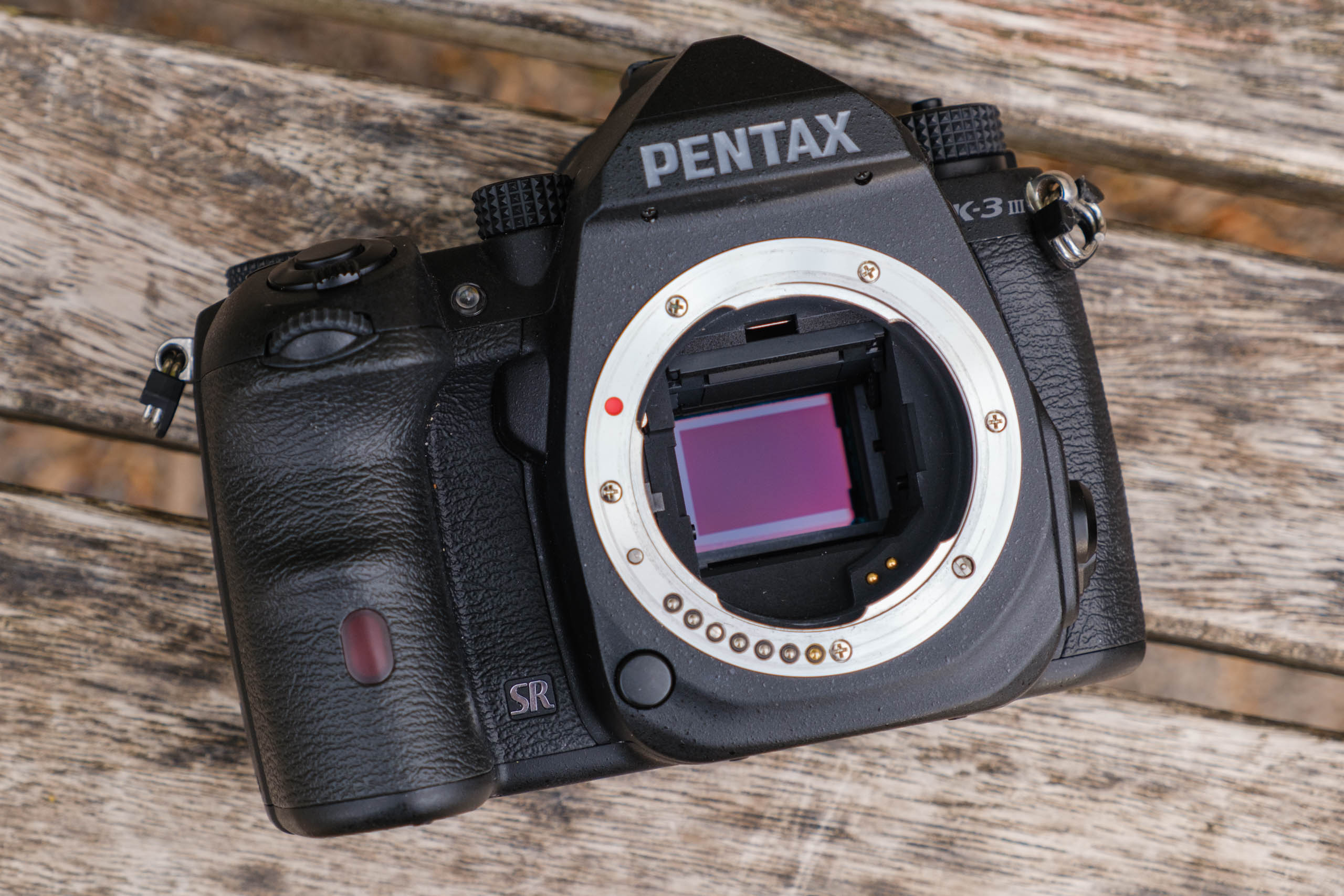
A close look at the menus and settings reveals that, unsurprisingly, everything relating to white balance or colour output has also been removed. Externally, all the buttons and dials are now marked in grey, rather than white, while the onscreen user interface is almost entirely monochrome. But that’s about the full extent of the differences.
In other respects, we get all the same features as the standard K-3 Mark III. This means the camera is built around a 26MP APS-C sensor that employs a backside-illuminated design to reduce noise and improve dynamic range. Its sensitivity stretches all the way up to ISO 1,600,000 and with any luck, it should give much better results that the colour sensor at such super-high settings.

For continuous shooting, the promised speed of 12 frames per second is impressive for a DSLR that has to flip its mirror up and down, while the 32-frame raw buffer is very respectable, too.
Autofocus utilises a SAFOX 13 sensor, which includes no fewer than 101 focus points, of which 25 are cross-type and 41 are user-selectable. The camera is claimed to be capable of focusing in light as low as -4 EV, while a 307,000-pixel metering sensor aids with subject identification for focus tracking purposes. Switch to live view, though, and the camera falls back onto a contrast-detection AF system, which feels distinctly outdated compared to the on-sensor phase detection now found on almost all mirrorless cameras.
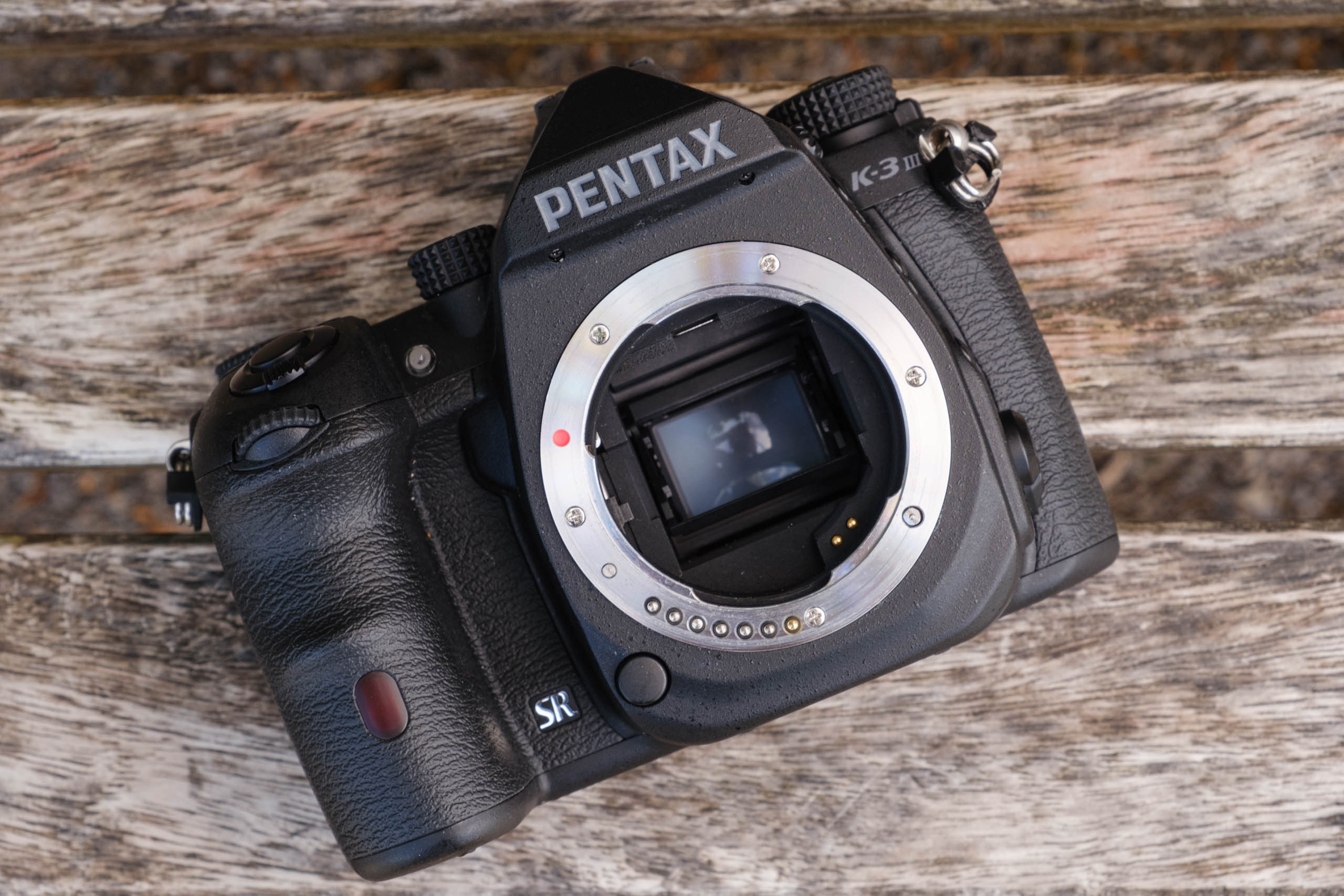
For composition, you get the largest viewfinder ever seen on an APS-C DSLR, with its 0.7x equivalent magnification providing a similar size view to most full-frame models. However, this is slightly tempered by the fact that several high-end APS-C mirrorless cameras boast electronic viewfinders that are even larger. On the back you get a 3.2in touchscreen that is fixed, rather than articulated, which these days is unusual – and disappointing.
Five-axis in-body image stabilisation (IBIS) is built in and works with almost any lens you can use, promising up to 5.5 stops shake reduction. The system also offers some useful features that are exclusive to Pentax. It can simulate the effect of an optical low-pass filter in suppressing sampling artefacts, automatically correct angled horizons – really useful for hand-held shooting – and be used to fine-tune your composition when using a tripod. However, the K-3 Mark III’s pixel-shift multi-shot function has gone, as Pentax only uses this for full-colour sampling at each pixel location.
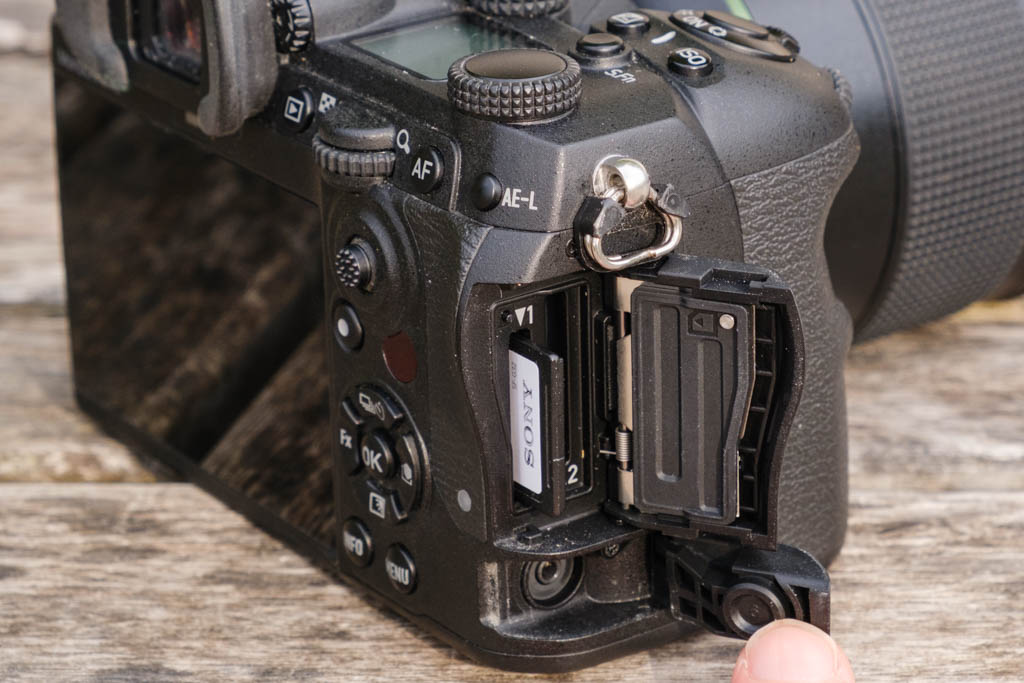
Files are recorded to dual SD card slots, one of which supports high-speed UHS-II media. The two cards can either be used sequentially, or in backup mode with files stored to both. Alternatively, it’s possible to send raw files to one card and JPEGs to the other.
Both Bluetooth and Wi-Fi are included for smartphone connectivity, which utilises the free Image Sync app. This provides a conventional set of features, allowing remote control of the camera from your phone either with or without a live view feed, and facilitating image sharing on social media. It’s also possible to geotag your images using your phone’s GPS. A nicely implemented in-camera raw converter allows you to experiment with different processing effects before sharing your photos.
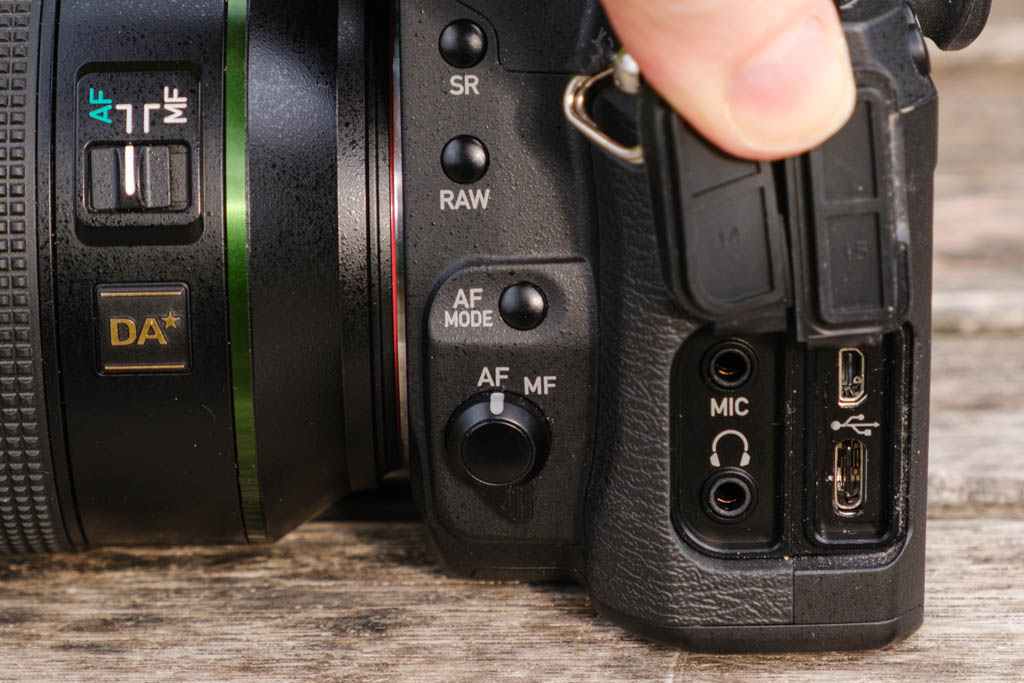
The camera is capable of recording 4K video, complete with built-in microphone and headphone sockets for capturing and monitoring higher-quality sound. However, the fixed screen, contrast-detect autofocus, and lack of advanced video features limit the camera’s capabilities in this regard.
Key features
- Markings: All the buttons are now marked in grey instead of white. This fits the monochrome concept nicely, but they’re less easy to read at a quick glance or in low light
- Power: The D-LI90 battery promises an impressive 800 shots per charge. It’s charged internally using the USB-C port.
- Remote: A 2.5mm electronic release socket is found on the side of the handgrip, while infrared receivers are paced on both the front and back.
- Lock button: Pressing this button and spinning the rear dial allows the exposure settings to be locked for a sequence of shots
- Green button: This has an array of handy functions, ranging from engaging auto ISO to activating stop-down metering with manual-focus lenses. Confusingly, it’s still called the ‘green button’, despite now being coloured grey.
- Flash: There’s no built-in flash, but a hot shoe allows use of external units such as the AF 540 FGZ II (£449), while a PC sync connector facilitates use with studio strobes
- Battery grip: The Pentax D-BG8 ($297 / £329) screws onto the base and provides a duplicate set of controls for portrait-format shooting, while accepting an additional battery
Build and Handling
Pentax DSLRs have traditionally been extremely well-built, and the K-3 Mark III Monochrome is no different. Its robust magnesium alloy body is dustproof and weather resistant, and certainly feels like it should withstand plenty of abuse. The dials all have textured rubber grips, while the buttons are large and have decent travel, which makes the camera reasonably easy to use while wearing gloves.
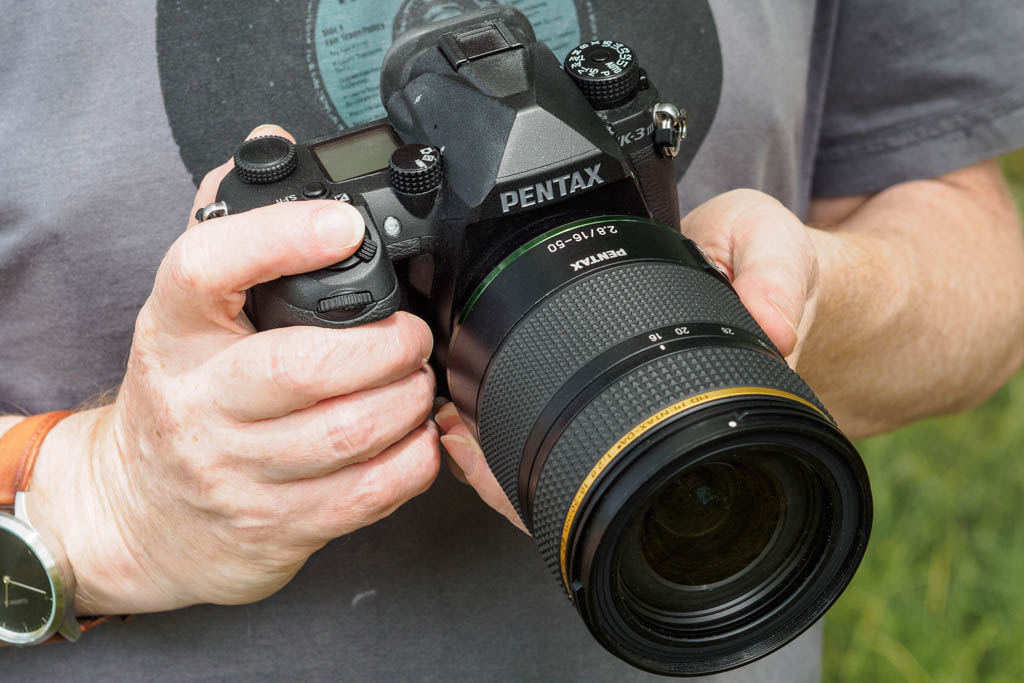
The camera fits nicely in your hand, though, thanks to the large, rubberised grip and well-defined resting space on the back for your thumb. The most important controls are well placed for operation by your right forefinger and thumb, while a further column of buttons on the side of the lens throat is positioned within easy reach of your left thumb. It’s a hefty beast though, measuring 134.5 x 103.5 x 73.5mm and weighing in at 820g, which is larger and heavier than any APS-C mirrorless camera.
Existing K-3 Mark III owners will find an identical control layout, with dual control dials at the front and back used to change shutter speed and aperture respectively, and a pair of buttons behind the shutter release for ISO and exposure compensation. The power switch encircles the shutter button; pulling it to a sprung position beyond the On mark stops down the aperture for depth-of-field preview. A prominent dial beside the viewfinder selects between viewfinder, live view and movie shooting.
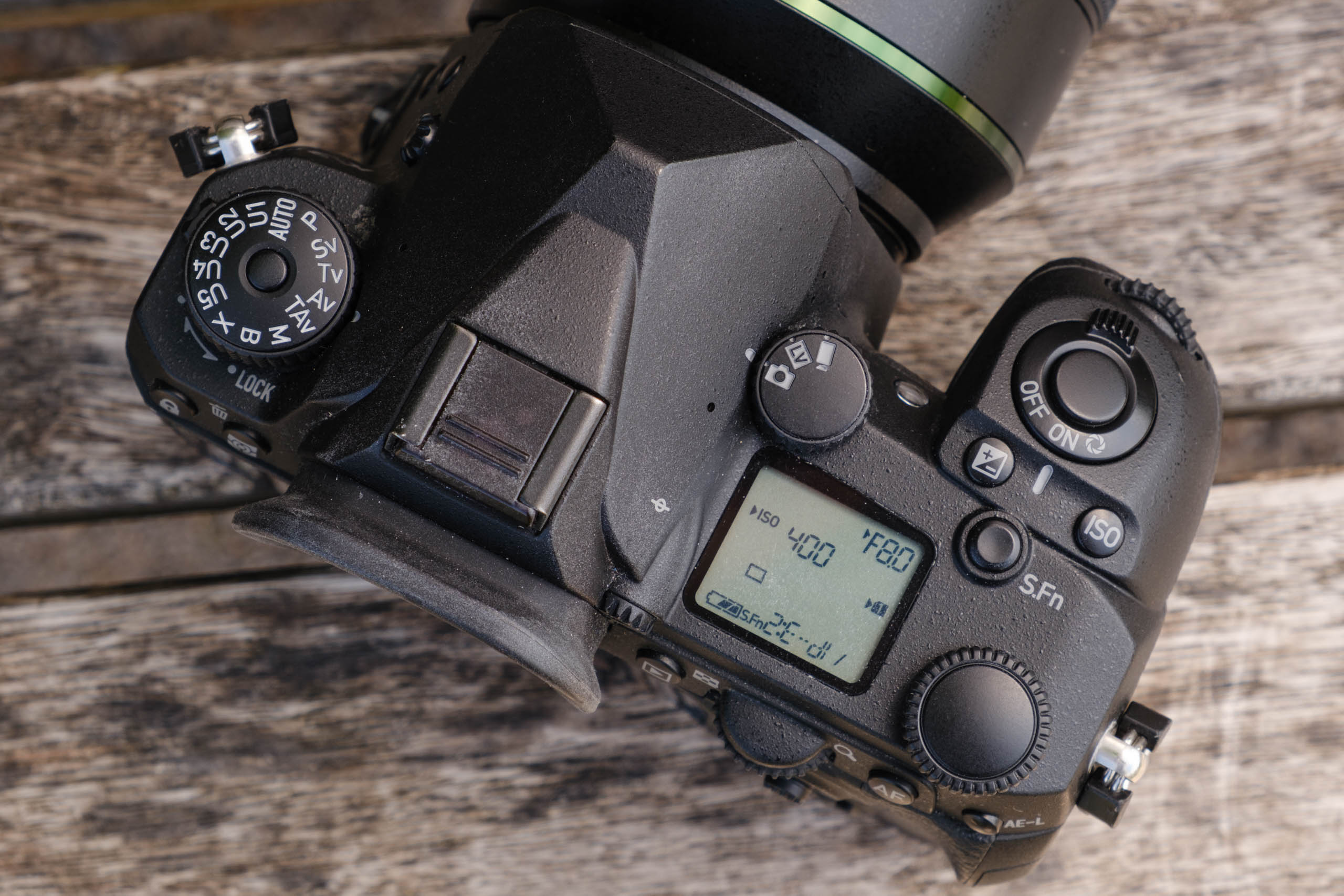
A conventional exposure mode dial is positioned on the camera’s left shoulder. In addition to the usual set of PASM modes, this includes Pentax’s signature TAv and Sv options. The former allows you to specify both the shutter speed and aperture, with the camera adjusting the ISO to compensate, while the latter does precisely the opposite. In Program mode, spinning the front or rear dial allows you to temporarily select a specific shutter speed or aperture respectively for a sequence of shots, which is more sophisticated and useful than the usual program shift function.
There’s also a Smart Function (S.Fn) dial on the top, which can be used to change five user-defined functions, selected using the S.Fn button alongside. I generally used it for ISO control, but other options include exposure compensation, drive mode, or quickly switching between autofocus set-ups optimised for static and moving subjects.
A joystick on the back is used for positioning the focus point. However, unlike with other cameras, it isn’t fully integrated into the rest of the interface. For example, it can’t be used to scroll through images in playback, or to navigate menus and change settings. Instead, it will often push you back into shooting mode.
Meanwhile, the d-pad buttons are dedicated to changing drive mode, LCD brightness, and image processing settings. For the latter, the camera offers a choice of Standard, Hard, and Soft monochrome looks in place of the usual colour options, with plenty of control over detailed settings. Pressing the Info button on the back gives quick access to even more features, via a neatly laid-out onscreen control panel. As a result, almost every shooting setting can be changed without having to use the menus.

Nearly every button and dial can be customised, and it’s also possible to store five different setups for quick recall via the U positions on the mode dial. As a result, it should be possible for users to configure the camera to operate exactly as they’d like. So while the sheer array of controls can look daunting at first, with practice the camera becomes quick and intuitive to use.
Using manual lenses
One of the big attractions of Pentax DSLRs is the huge range of K-mount lenses available, dating back to 1975. This includes the best range of dedicated APS-C format lenses produced for any DSLR system. There’s also a vast range of older film-era lenses, although the smaller sensor imposes a 1.5x field of view crop.
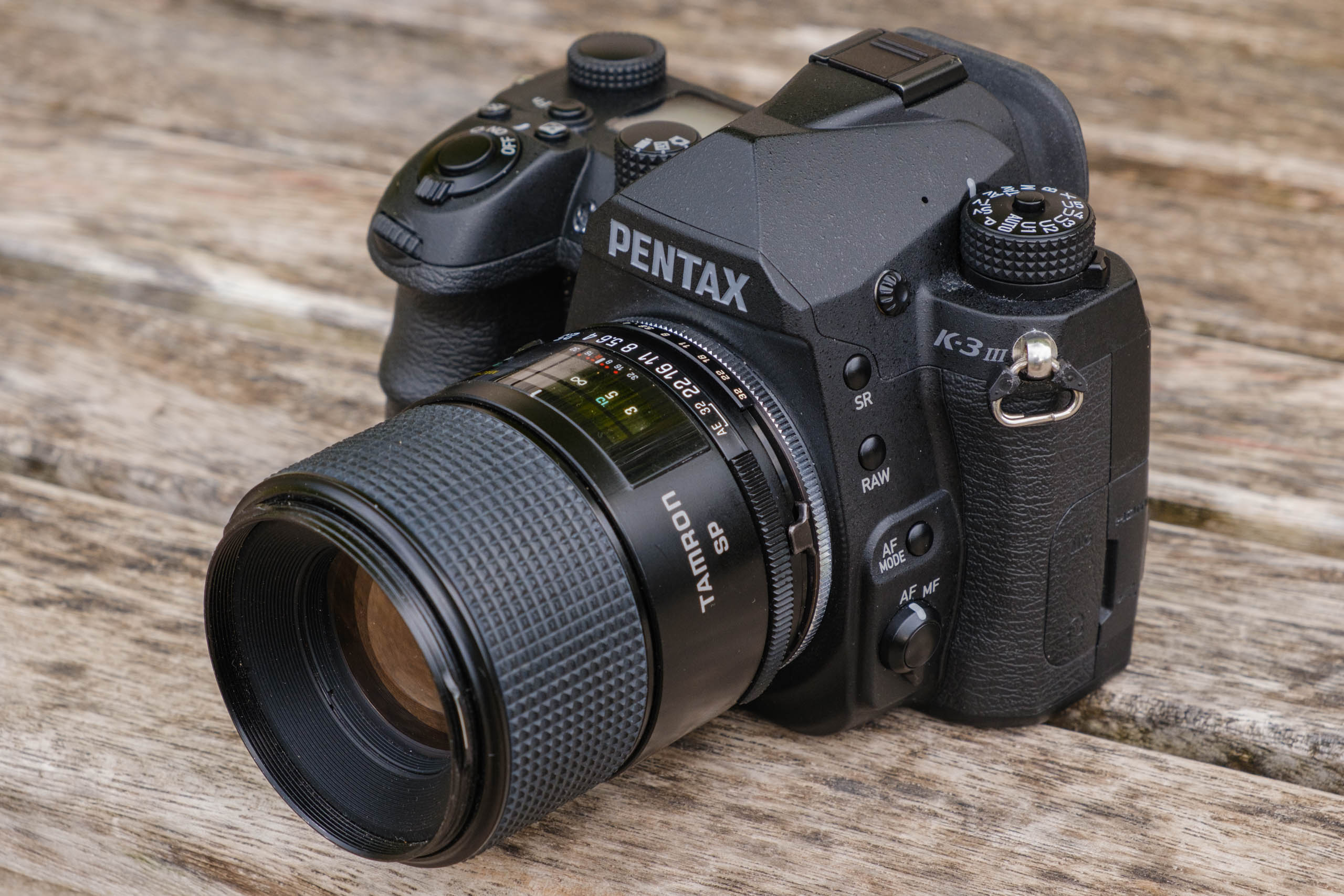
While you’ll get full functionality with modern AF designs, the camera still works nicely with manual-focus lenses. You need to enter the focal length for the IBIS system to work correctly, and the camera can be set to request this when it’s switched on. The AF system will indicate when the subject is in focus, but for the most reliable results you’ll need to use magnified live view on the rear screen.
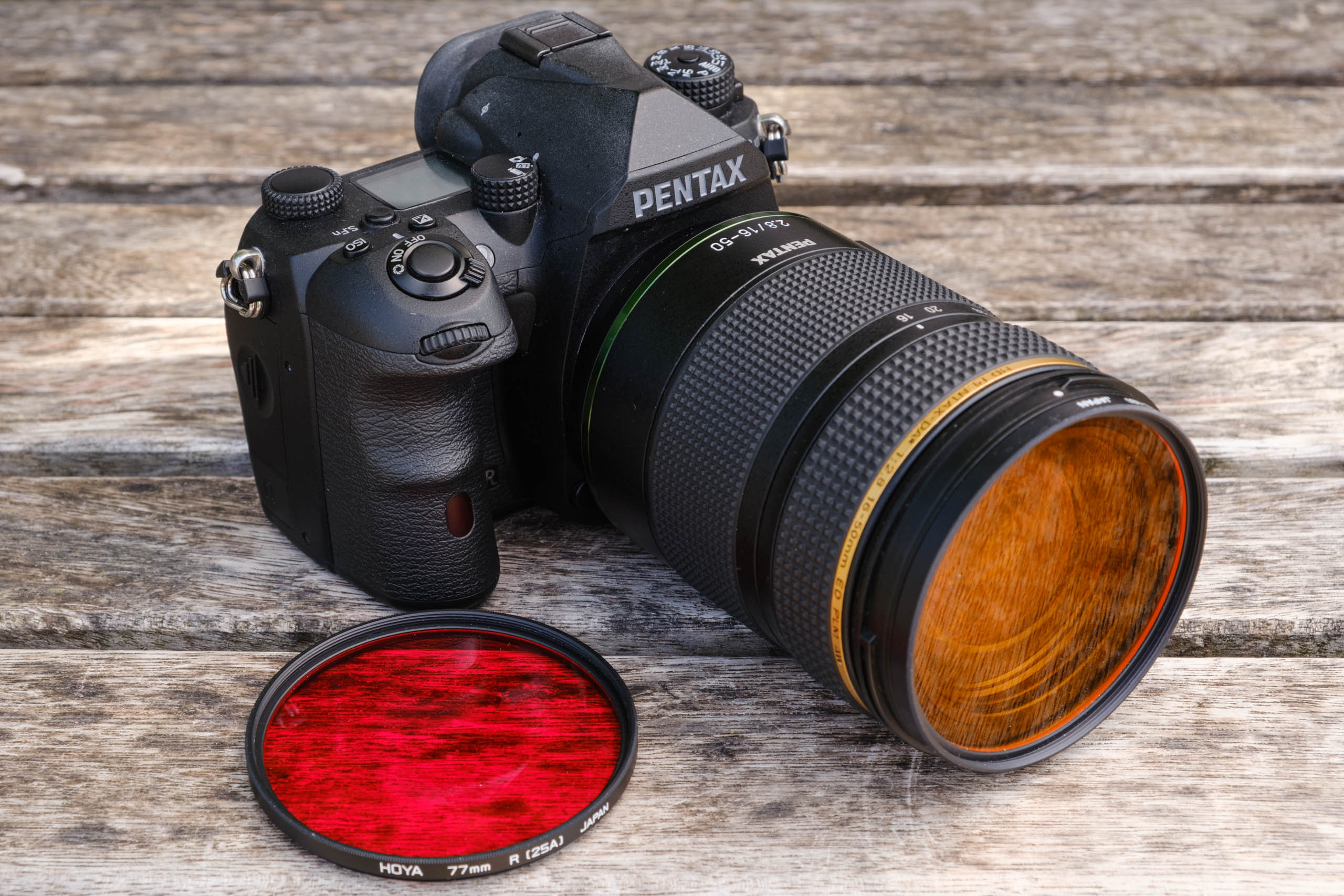
With the oldest fully-manual lenses, you need to shoot in M mode and enable use of the lens’s aperture ring in the menu. Uniquely, you can tell the camera the aperture you’ve set by spinning the rear dial, which will be recorded in the EXIF data. To check the metering, you need to activate the depth-of-field preview using the power switch. Alternatively, if you press the ‘green button’ on the back, the camera will select the correct shutter speed and/or ISO setting itself. I used a 1980s-vintage Tamron 90mm F2.5 Macro with good results.
Viewfinder and screen
One standout feature of the K-3 Mark III design is the viewfinder, which is probably the finest of any APS-C DSLR. Given its size, it’s still impressively bright and clear. An information panel beneath the focusing screen displays detailed exposure settings, including metering and drive modes. Thanks to a transparent LCD overlay, you also get a choice of gridlines and a dual-axis electronic level, while a series of small icons allow you to change the S.Fn dial function with the camera up to your eye. It’s as close as you could realistically expect to get to the levels of information provided by the electronic viewfinders of mirrorless cameras.
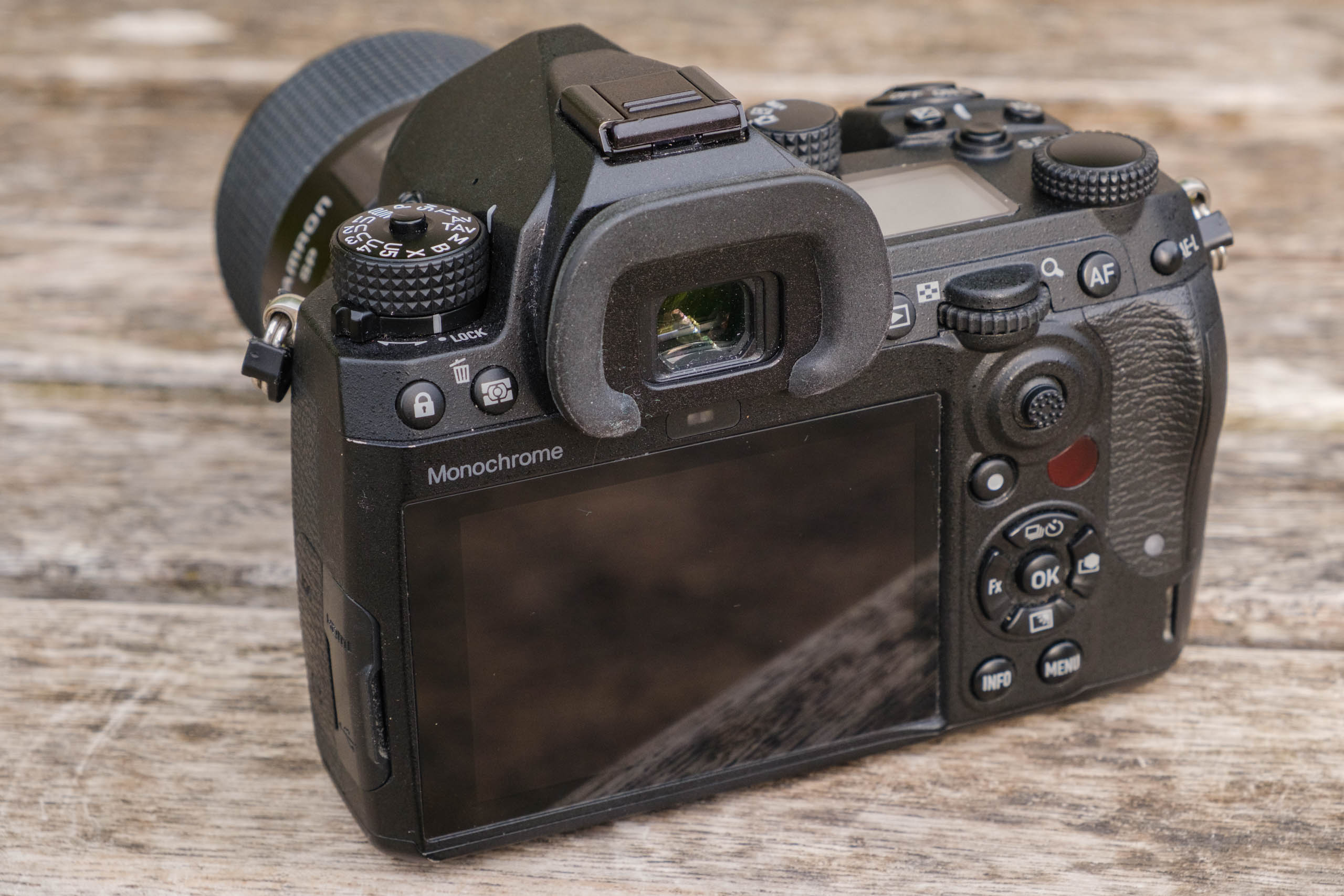
This is still an optical viewfinder, though, with all the usual drawbacks. It gets dark when you engage depth of field preview, making the effect difficult to judge. The focusing ‘snap’ with manual lenses is pretty good, but for truly accurate results you’ll need to switch to live view. Obviously, it can’t show any indication of how your images will turn out in terms of exposure, and nor can it preview the camera’s black & white output. Indeed, I often found myself wishing that that camera had an electronic viewfinder instead.

Help is at hand here, to a degree, by switching to live view using the 3.2in rear screen. It’s sharp and clear, and previews your processing and exposure settings to give a good idea of whether your shots are likely to work in black & white. It also gives a much better representation of what’s going on when you engage depth of field preview. Unfortunately, the lack of a tilting screen is a real drawback here, as it makes for awkward handling when shooting hand-held, and when working at low or high angles from a tripod.
Autofocus
As DSLRs go, the K-3 Mark III Monochrome’s autofocus system is pretty impressive. It employs 101 focus points covering about two-thirds of the frame width, but only a third of its height, with 25 being of the more accurate cross-type. Only 41 points are user-selectable, with the remainder being used to keep track of moving subjects. However, you don’t get anywhere the same kind of subject-tracking performance as the latest mirrorless cameras, which can identify and hold focus on subjects almost anywhere within the frame.
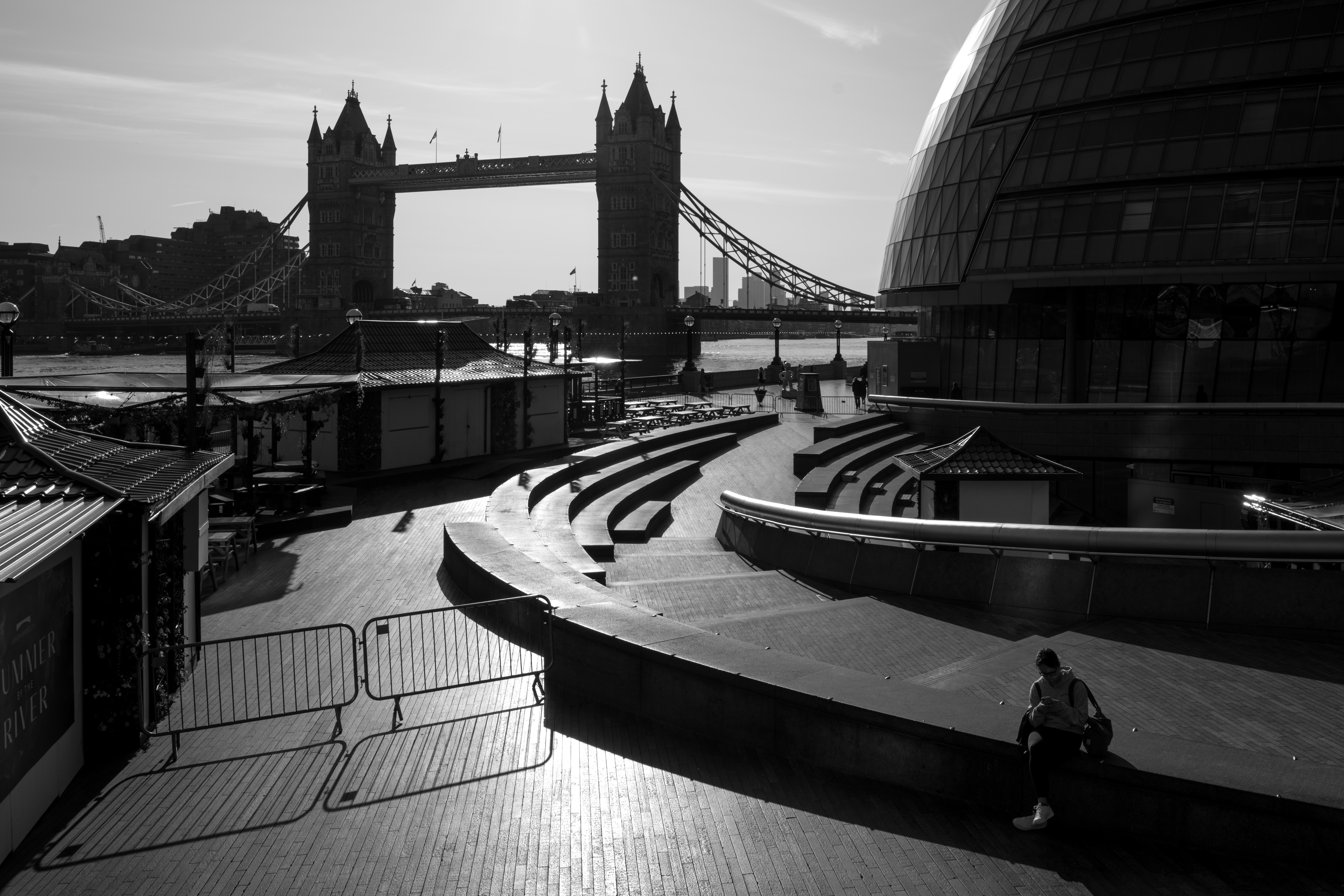
In addition to being able to specify a single focus point manually, several area modes are available that vary in terms of how many points they use, and across how much of the frame they can be positioned. These are useful with erratically moving subjects that might be difficult to follow using a single focus point; indeed some of them are only available in AF-C.
You can also allow the camera to choose the focus area itself, and in this case, it uses subject recognition to help identify the optimum point. Most obviously, the system will attempt to focus on faces even if another object is closer to the camera, which older, less sophisticated systems wouldn’t do. I used the HD-Pentax DA* 16-50mm F2.8 ED PLM AW zoom for this review. As a result, I wasn’t really able to push the AF system to its limits, in the same way as using a long telephoto lens would. However, I found the camera generally did a good job of focusing quickly and accurately.

Switch to live view, though, and AF is rather slower with a tendency to hunt for focus, especially when light levels drop. The saving grace, though, is that contrast detection AF is inherently very accurate, and the focus point can be positioned across a larger area of the frame. It’s perfect for shooting static subjects on a tripod, but less so for dynamic situations.
Performance
Overall, the Pentax K-3 Mark III Monochrome is quick and responsive, and won’t get in the way of your shooting. By DSLR standards, it’s reasonably unobtrusive too, with both the mirror and shutter mechanisms being soft and well-damped. But it’s not as quiet as most mirrorless models.
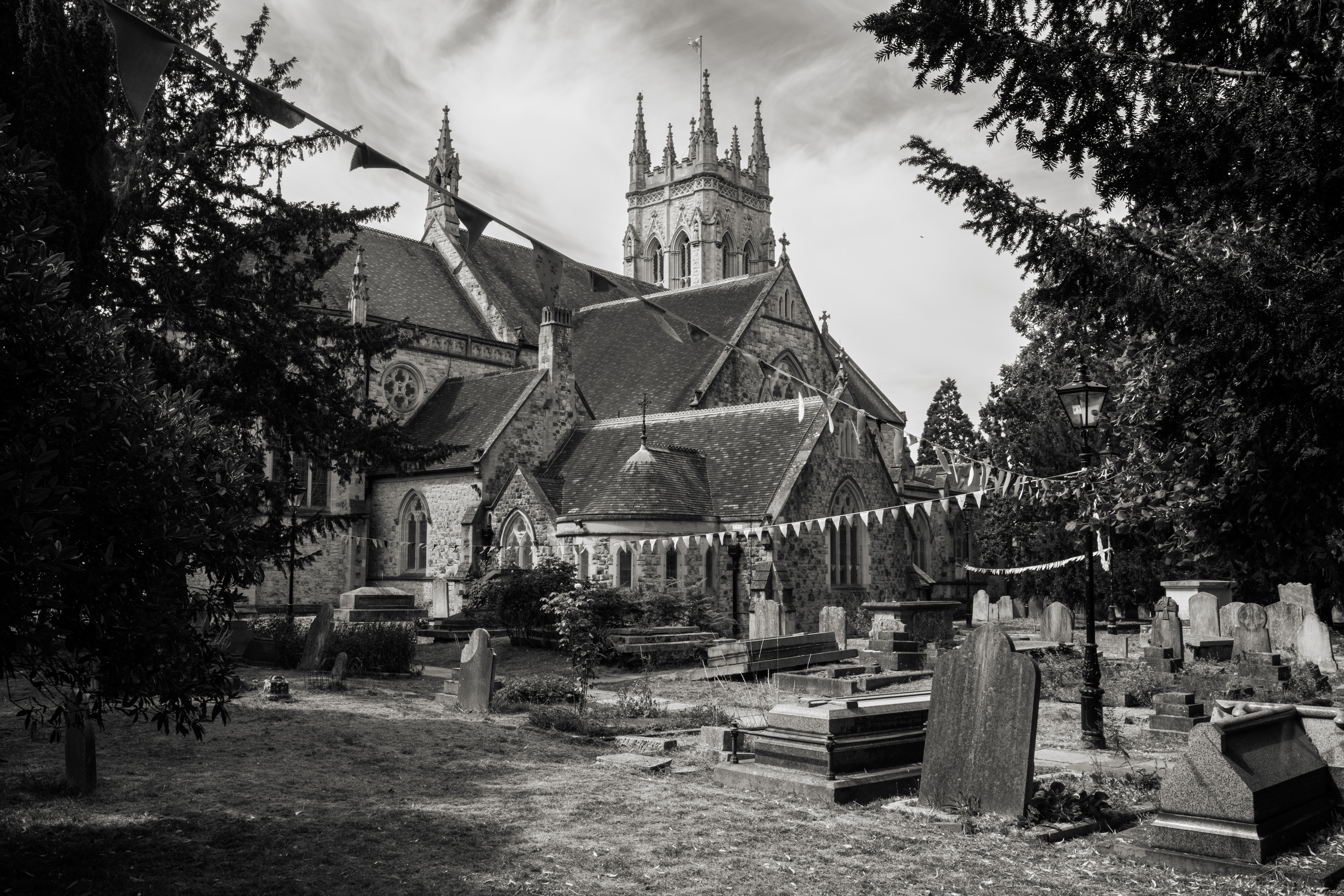
If you do need to shoot silently, then it’s possible to enable the electronic shutter option in live view. However, this comes with significant rolling shutter effects, so it’s best used with static or slowly moving subjects only. The camera will also disengage live view after a minute’s inactivity, with the mirror dropping back down again audibly.
It’s also important to understand that the electronic shutter setting also applies to viewfinder shooting; first the mirror flips up, then the picture is taken after a short but noticeable delay. This has the benefit of extending the fastest shutter speed to 1/16,000sec, but means you get both the noise of the mirror and shutter mechanisms, and the risk of rolling shutter distortion. So you need to remember to disable the setting whenever you don’t need it.
While the spec sheet promises the ability to shoot at 12 frames per second, I was never able to coax this speed from the camera in my testing. Instead, I measured 10fps for normal viewfinder shooting, and 11fps in live view, with a respectable 37-frame raw+JPEG buffer. Mind you, this should still be quick enough for almost any purpose.
Metering is generally reliable, but by no means fool-proof. The standard multi-segment mode can be a little prone to underexposure in dull, grey conditions, while sometimes blowing out highlights in high-contrast situations. So you need to get used to anticipating this and pre-emptively applying exposure compensation. This is especially important with the monochrome sensor, as there’s no way of retrieving clipped highlight detail – once it’s gone, it’s gone.
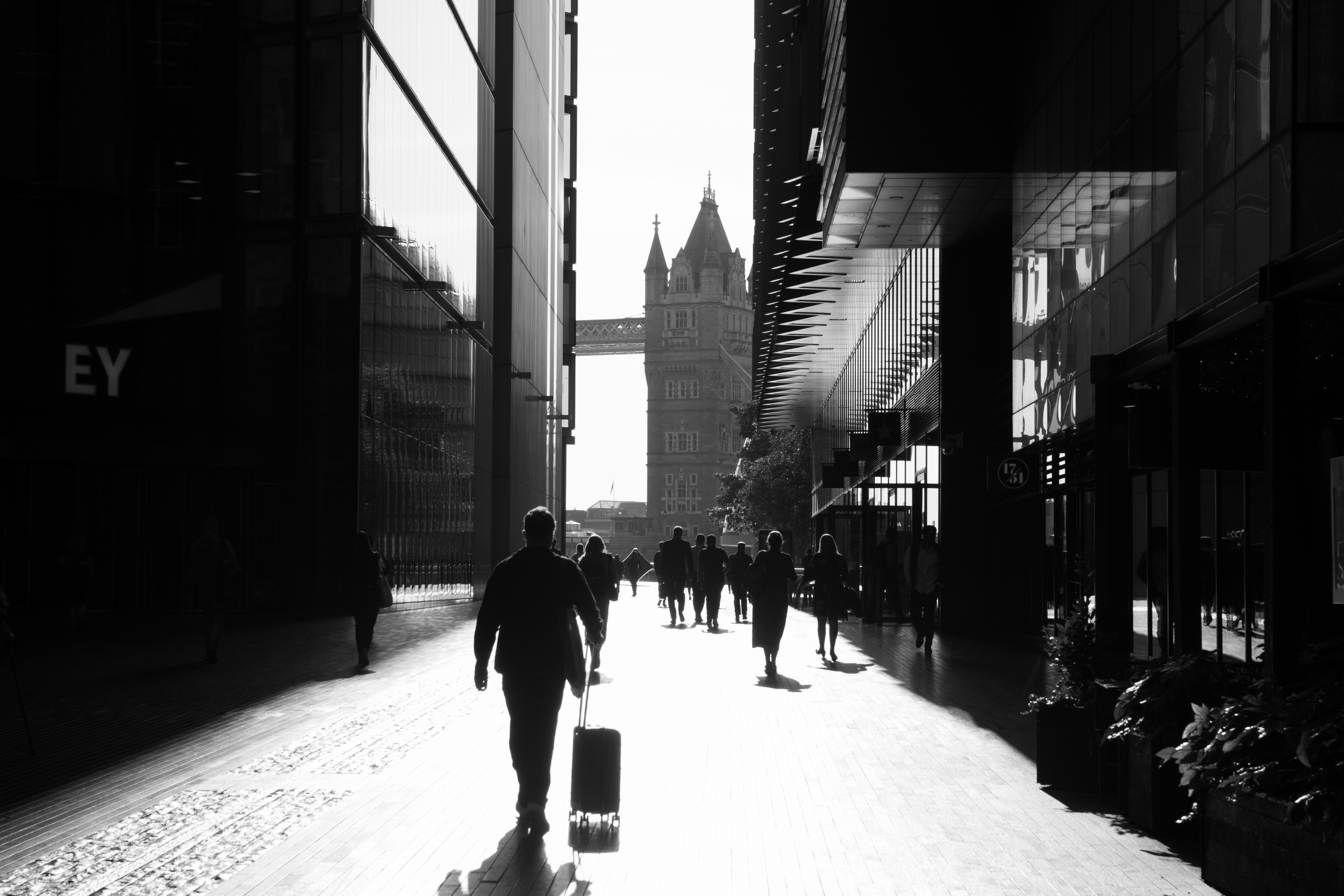
In this regard, I was surprised to find that highlights clip a stop earlier at ISO 200 compared to ISO 400 and higher settings, in both JPEG and raw files (the camera doesn’t indicate this in any way). This means that counter-intuitively, there’s a strong case for using ISO 400 as your base setting in bright light. Alternatively, you could use the highlight spot metering mode in concert with the AE-L button to avoid blowing out crucial detail. However, as the reading is taken in the centre of the frame, this will usually require recomposing each shot.
Thankfully, the flip side of the sensor’s intolerance of over-exposure is a truly phenomenal dynamic range in raw files. At low ISOs, you can delve practically as deep as you like into the shadows and bring up remarkable levels of detail. In ISO 200 shots exposed to retain bright highlights, I was able to push Adobe Camera Raw’s exposure slider up to +4 or even +5 stops without spoiling the image. Even when some noise does start to appear, the fact that it has a granular, pixel-level pattern means that it’s not at all objectionable.

The monochrome sensor responds to colour filters in front of the lens in much the same way as black & white film, which allows you to manipulate the tonality of your image files. For example, an orange or red filter will darken blue skies relative to clouds, giving a more dramatic look – you can see this in the composite image below. The big advantage compared to shooting film, though, is that you don’t need to worry in the same way about the impact of the filter on your shutter speed – you can either increase the ISO to compensate or rely on stabilisation to give sharp images.
The individual files that make up this comparison are available via the following links: • No filter • Orange filter, Hoya O (G) • Red filter, Hoya R (25A).
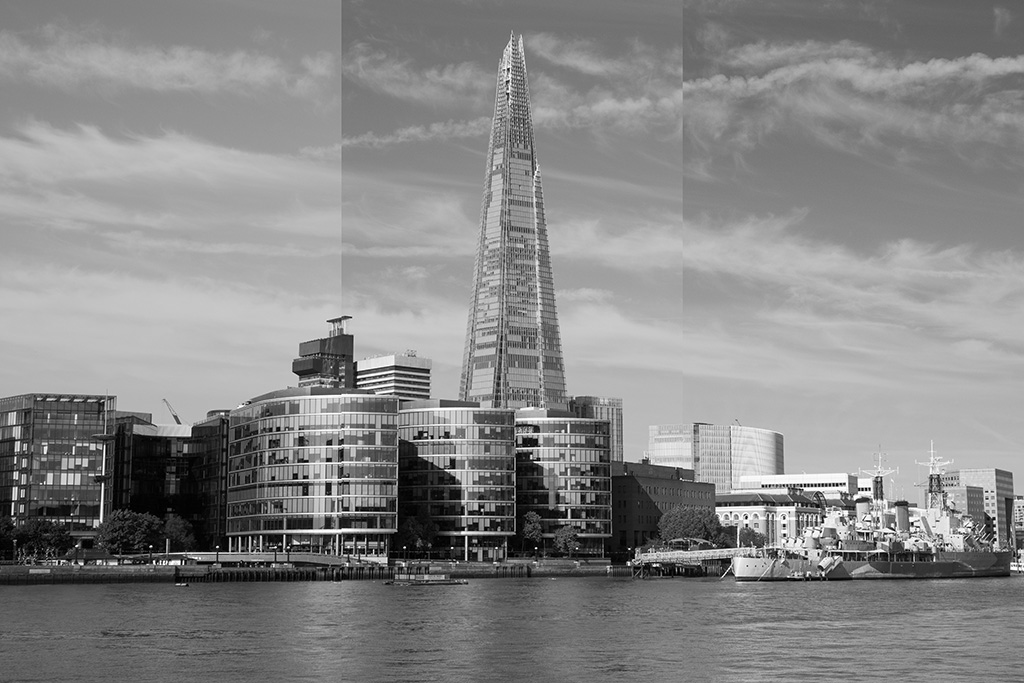
On this note, I found that the in-body image stabilisation worked pretty well. Using the 16-50mm zoom towards its wide end, I was able to get some usable images hand-held at shutter speeds as slow as 0.5sec using the 16-50mm zoom at its wider settings (although not every single shot). The only catch is that IBIS is never as effective with telephoto lenses, where many users will feel they need it most, and the viewfinder image isn’t stabilised either, so you get no feel for how well it’s working. You also need to ensure stabilisation is disabled when shooting on a tripod, or you’ll risk getting blurred images. The camera will do this automatically if you either engage the self-timer or use the optional infrared remote control.
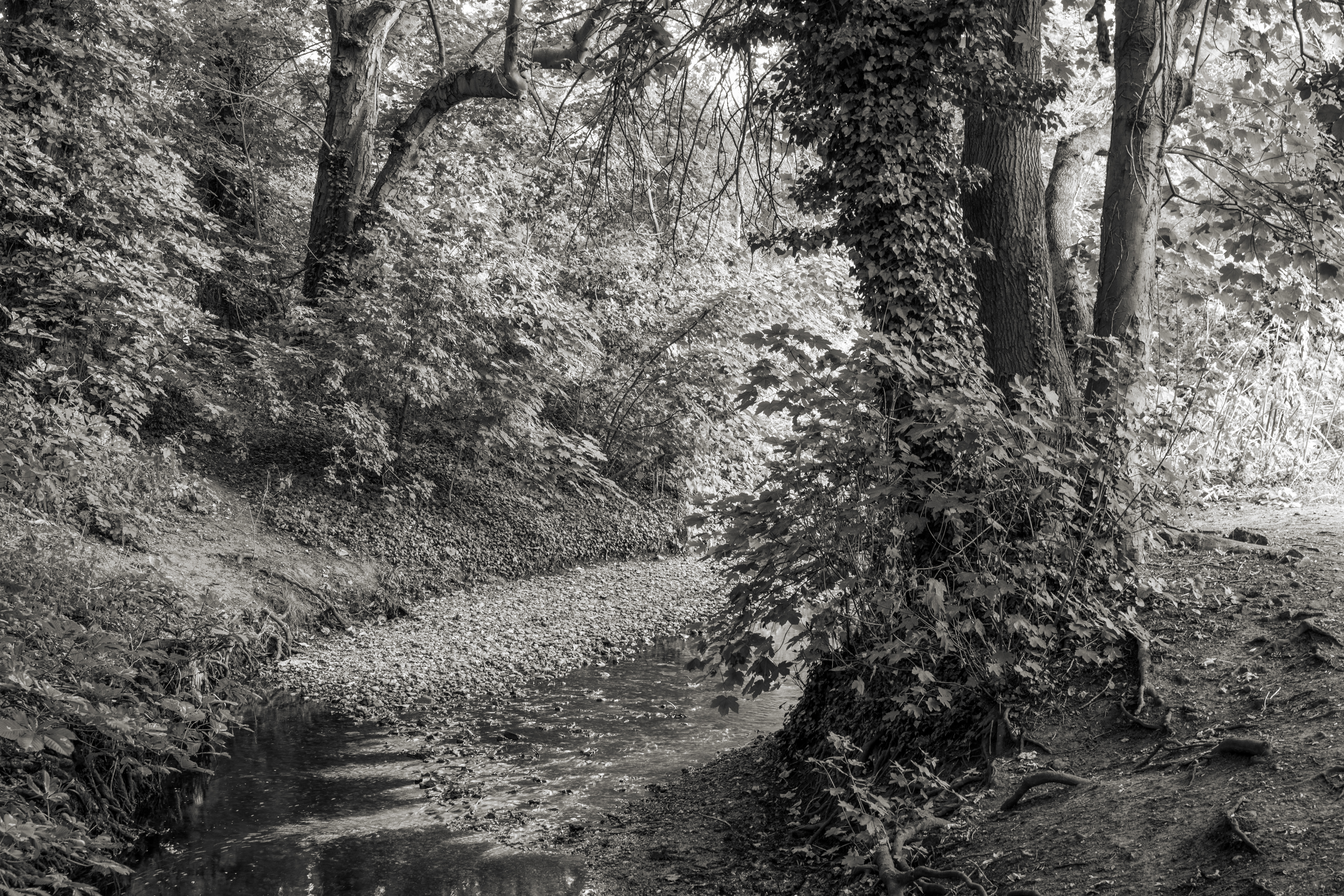
One feature that does seem slightly redundant is the anti-aliasing filter simulator. This uses the IS system to slightly blur the image, which in principle helps reduce image sampling artefacts. On the standard camera, that’s great for suppressing distracting colour moiré on fabrics, for example. On the Monochrome, though, it’s much less useful. In principle it might occasionally still reduce potential false detail with very fine repeating patterns. But mostly, it slightly softens the entire image for no clear gain.
ISO and Noise
One area where the monochrome sensor positively shines lies with high-ISO noise, or rather, the lack of it. At low sensitivities, the 26MP sensor resolves fine detail exceptionally cleanly, with barely any visible noise, and this is maintained right through to ISO 3200. The finest texture starts to blur away at ISO 6400, however the sensor continues to give entirely usable images right up to ISO 102,400, which is some way beyond any colour APS-C camera.
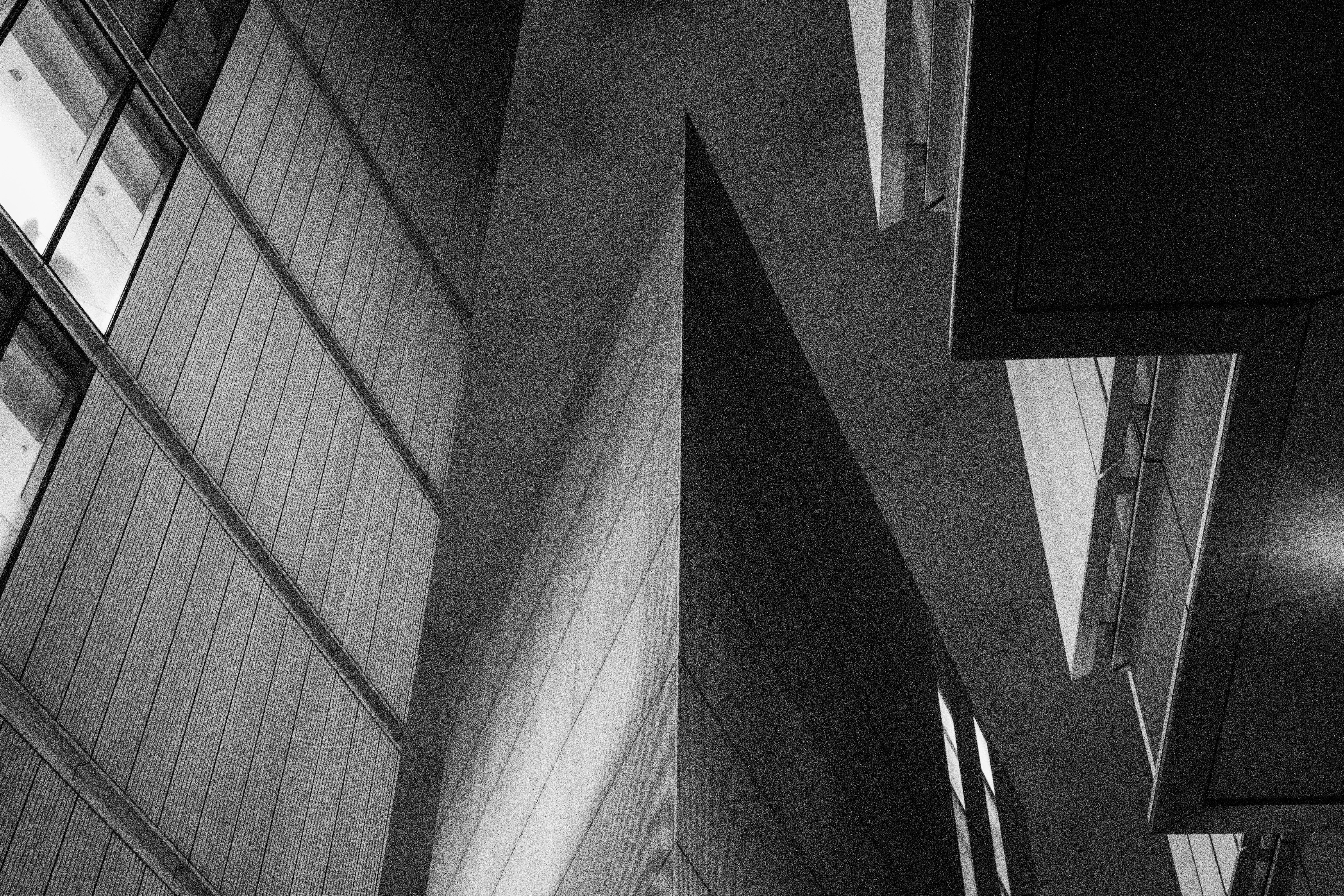
Even higher settings might be workable if you don’t mind a rough, grainy aesthetic. I’m not at all convinced by the very highest settings beyond ISO 409,600, but then again, I can’t really envisage any situation when you’d possibly need them.
Below are 100% crops from our standard studio test scene. Click on any thumbnail to see the full-size image. Shot using the HD-Pentax DA* 16-50mm F2.8 ED PLM AW lens at 50mm, DNG raw, processed using Adobe Camera Raw.
Pentax K-3 Mark III Monochrome: Our Verdict
In a way, the Pentax K-3 Mark III Monochrome is exactly what I expected it to be. It combines the robust, enthusiast-friendly design of the K-3 Mark III with all the established advantages of a monochrome sensor: high pixel-level sharpness, low noise, end excellent dynamic range. If you’re a Pentax user with a nice set of APS-C lenses, who loves shooting in black & white and has the money to spare, it’s an easy recommendation. It’s a fine camera that will repay you with superb results.
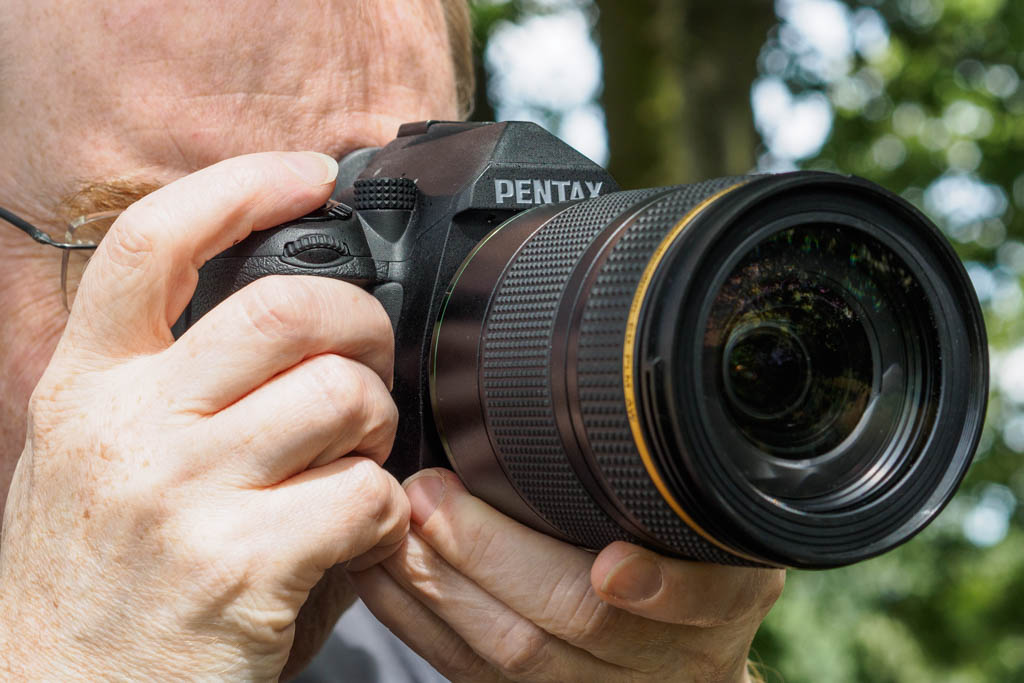
For anyone else, though, I’m not so sure. While $2,197 / £2,049 is dramatically less for a specialist mono camera than Leica’s offerings, I just don’t think the K-3 Mark III Monochrome has the same appeal. A chunky APS-C DSLR simply isn’t the same object of desire as a beautiful minimalist rangefinder, and doesn’t offer such a special shooting experience, either. If it were a compact, tactile full-frame DSLR that could use all those film-era K-mount lenses without cropping, it might be a different matter.
This, in turn, highlights another elephant in the room. If you’re a Pentax user who wants black & white files with higher resolution and lower noise than the K-3 Mark III, you could buy the full-frame Pentax K-1 Mark II instead, for $1,797 / £1,899. The saving could go towards a lens or two. Meanwhile, anyone else who wants to learn how to shoot in black & white could buy a mirrorless camera, switch to B&W mode, and get a live preview in the viewfinder of how their images will turn out in the absence of colour.
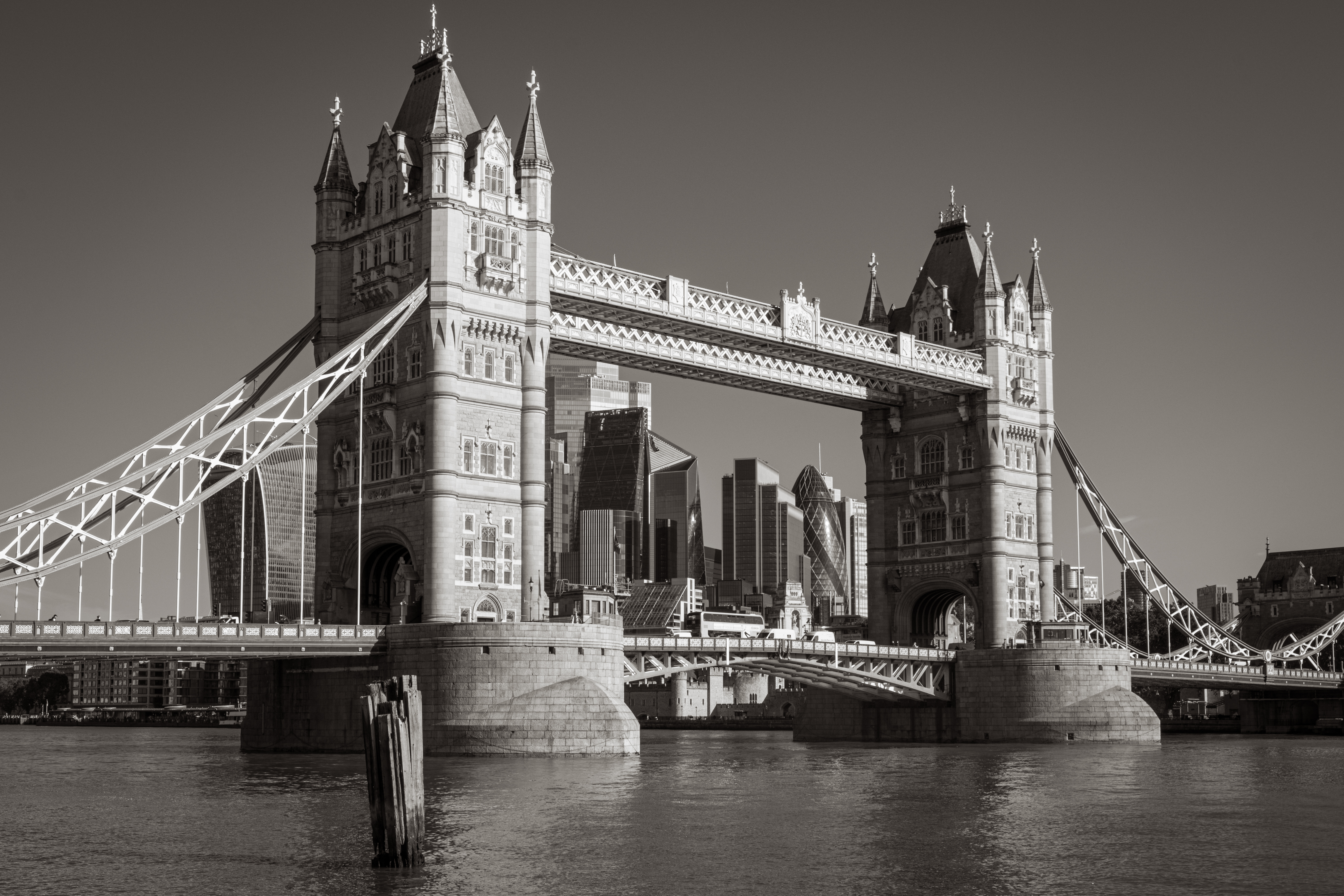
I don’t want to sound too critical of the Pentax K-3 Mark III Monochrome, though. It’s still a fine camera that succeeds on its own terms, and I was pleased by the image files it gave me. It’s also great to see a company other than Leica proving the advantages of the monochrome sensor; I just wish more would follow.

Follow AP on Facebook, X, Instagram, YouTube and TikTok.
Pentax K-3 Mark III Monochrome: Full Specifications
| Sensor | 25.7MP monochrome CMOS, 23.3 x 15.5mm |
| Output size | 6192×4128 |
| Focal length magnification | 1.5x |
| Lens mount | Pentax KAF2 |
| Shutter speeds | 30-1/8000sec; 30-1/16,000sec (electronic) |
| Sensitivity | ISO 200-1,600,000 |
| Exposure modes | PASM, Sv, TAv, Auto |
| Metering | Multi, centre-weighted, spot, highlight spot |
| Exposure comp | +/-5 EV in 0.3 or 0.5 EV steps |
| Continuous shooting | 12fps |
| Screen | 3.2in, 1.62m-dot touchscreen |
| Viewfinder | Pentaprism, 0.7x magnification |
| AF points | 101 (41 user-selectable) |
| Video | 4K up to 30fps, Full HD up to 120fps |
| External mic | 3.5mm stereo |
| Memory card | 2x SD, SDHC, SDXC (1 UHS-II) |
| Power | D-LI90 Li-ion |
| Battery life | 800 shots per charge |
| Dimensions | 134.5 x 103.5 x 73.5mm |
| Weight | 820g inc battery and card |

